Athletes who want to learn how to run the 400m faster are gutsy because running the open 400m can be one of the most challenging events to race in track and field. Combine the 400m with four athletes, a baton, and a heated rivalry, and now you have one of the most exciting events to race or watch. Either way, in the open 400m or the mile relay (4X400m), the track athlete has to have a great combination of power, acceleration, speed, and long speed endurance in order to be successful in this event. However, there is more to learning how to run the 400m than you may think.
Most long sprinters are not aware of the proper way to run the 400m and some even try running the 400 all out with a 100% effort from start to finish. This isn’t a bad place to start because you can tell that this type of athlete is very determined to race the entire 400m because as we all know, it is a sprint event. Now all we need to do is get this athlete to understand how to run the different phases of the 400m faster and they will be able to maximize their potential as a 400m specialist.
Understanding the 400m
The 400m can be known as the dreaded long sprint race that nobody wants to run, but generally speaking it isn’t that much different than the 200m with the exception of speed endurance. Like the 200m, the 400m race has a drive phase or acceleration out of the starting blocks. After the 400m runner has accelerated out of the starting blocks, they will try to reach and then maintain a near maximum race velocity. However, the greatest challenge in the 400m is not only fine tuning the energy system training, but teaching athletes how to actually race the 400m faster so they can be successful beyond 200m-300m.
The importance of the 400m Start
Before any athlete learns how to run the 400m faster, it is important that they understand the value of the start and the acceleration in their race. Young 400m athletes will tend to run the 400m with the idea that they should start out slow and progressively build their speed over the duration of the 400m.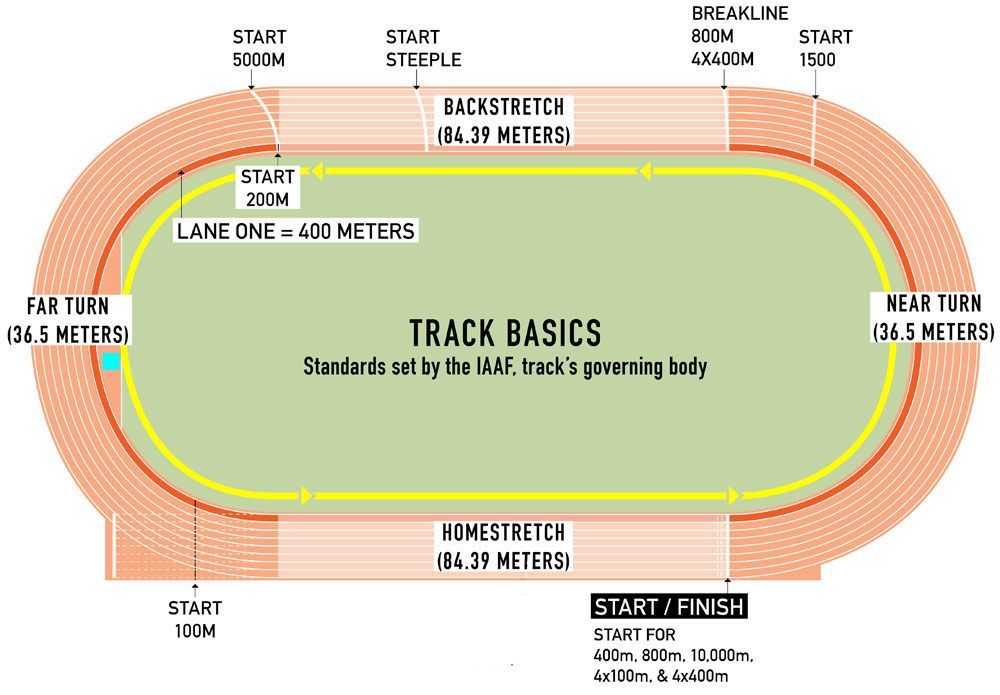 Don’t do this. If a 400m runner goes out too slow from the start, they will not be able to utilize a key energy system that allows for a 6-7 second window where no lactic acid and hydrogen ions will be produced. This happens to be the first 6-7 seconds of any maximal effort, which ends up being the first 6-7 seconds of the 400m race. If anything, use this opportunity to your advantage and power out of the blocks like a lean, mean, 400m racing machine.
Don’t do this. If a 400m runner goes out too slow from the start, they will not be able to utilize a key energy system that allows for a 6-7 second window where no lactic acid and hydrogen ions will be produced. This happens to be the first 6-7 seconds of any maximal effort, which ends up being the first 6-7 seconds of the 400m race. If anything, use this opportunity to your advantage and power out of the blocks like a lean, mean, 400m racing machine.
How to run the 400m
Acceleration
In the 400m, the athlete will get into the starting blocks after the starting official has given them the verbal cue of “on your marks”. After the starting official has given the verbal cue “set” and fired the starting pistol, the 400m runner will accelerate into the curve out of the blocks and try to reach near their maximum race velocity.
The acceleration to near maximum race velocity zone will range between 50-70m (depending on the athlete) and then transition into the cruise control phase of their 400m.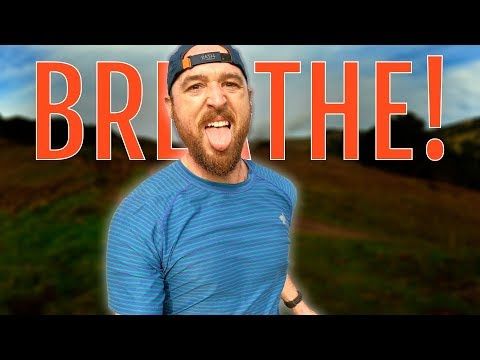
Cruise control
The next phase of the 400m is the relaxed arm phase or cruise control phase (80-130m in length). This is when the 400m runner continues to maintain the same arm and leg turnover as they did in the first 50-70m, but the range of motion (ROM) of the arm form is decreased as the goal here is to conserve arm energy. What this means is the 400m runner does not need to pump the arms as aggressive and as far (ROM) because the arms will become very important later in the race.
It is very important that the 400m runner does not show any visual signs of slowing down during this phase. The idea is to maintain race velocity, not jog/slow down. This cruise control phase can range anywhere between 100-150m.
The 200m
Once the 400m runner has reached the 200m, they should arrive around 1-2 seconds slower than their personal best 200m time. So for example, if a 400m runner is capable of running the 200m in 21.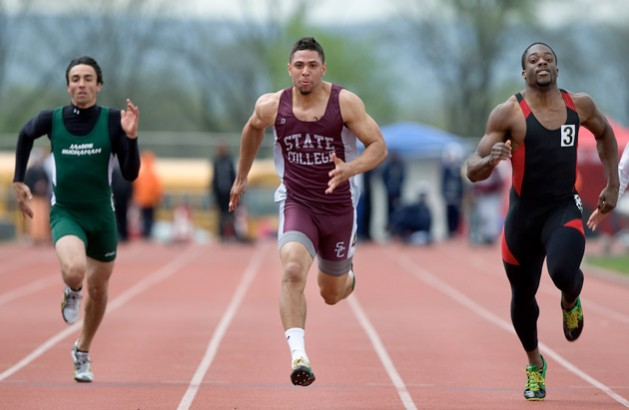 5 seconds, they should hit the first 200m in their 400m race at 22.5-23.5 seconds (1-2 seconds slower).
5 seconds, they should hit the first 200m in their 400m race at 22.5-23.5 seconds (1-2 seconds slower).
Building the arm form back to 100%
When the 400m runner is around the 200m, they will go through a “building” phase (feels like re-accelerating) where they incorporate more energy toward their arms again with a progressive increase in range of motion and energy output over the next 20-50m. If we were to compare both the cruise control phase and “building” phase to driving a car, it would go something like this.
Imagine that you have the cruise control set for 51mph (cruise control phase) while following a car but there is too much oncoming traffic for you to pass. You see a passing lane up ahead and when the opportunity arises, you gradually push on the accelerator (building phase). This is what the transition into the building phase is going to feel like as you incorporate more energy to your upper body.
All out!
Here is the important part where the arms come back into play. As the 400m runner builds the arm form back up after the cruise phase, they will go all-out with a little more than 150m to go to the finish. This is like pushing the accelerator to the floor in a car. Out of shape 400m runners will most likely wait to go all-out when they are closer to 120m to go to the finish.
As the 400m runner builds the arm form back up after the cruise phase, they will go all-out with a little more than 150m to go to the finish. This is like pushing the accelerator to the floor in a car. Out of shape 400m runners will most likely wait to go all-out when they are closer to 120m to go to the finish.
During this last and final push for the finish line, you really won’t see a visual increase in the 400m athlete’s pace. If there is a significant increase in the athlete’s speed, then there is a good chance that the athlete ran the first 250m way too slow and saved their energy for the last 100m-150m.
Remember the analogy used earlier about driving a car…
In the all-out phase (150m to go), imagine that you are back in that passing lane and you have gradually pushed on the accelerator to pass (building phase). The only problem is that the jerk in the other lane decided he wants to drive fast when there is a passing lane. Also, it’s not a very long passing lane, so you have to pass quickly. You begin to floor it. This is what it is going to be like when you have about 150m to go to the finish.
You begin to floor it. This is what it is going to be like when you have about 150m to go to the finish.
“Lift”
Now that the 400m runner is going all-out and driving hard out of the curve to the finish straight, they will eventually need to use their arms to help create what most coaches refer to as “lift”. As the 400m runner gets closer to the finish line, they will have a little more emphasis in driving their arms upward. In order to create “lift”, they will drive their arms upward in an aggressive manner and keep the same range of motion as they would in any all-out sprint.
The reason the 400m runner wants to try to create “lift” is because by now the legs are very tired and need all the help they can get from the arms. It is important that the 400m runner does not over emphasize in increasing the arms range of motion beyond normal sprinting form. Remember, it’s not the range of motion we are trying to increase; it’s the emphasis on the upward drive within the arm form. In other words, we are trying to create “lift”, not overly exaggerated and sloppy “uppercut” arms.
In other words, we are trying to create “lift”, not overly exaggerated and sloppy “uppercut” arms.
Finish line
As the 400m runner approaches the finish line, they will need to make sure they keep driving and that they lean across the line. It is all too common for young athletes to run the 400m and then slow down the last 2m-5m before the finish line. Slowing down just before the line will compromise valuable time and could mean the difference between a school record or even a state championship.
Putting the phases of the 400m together
Now that you have an idea of how to run the 400m faster, you will need to learn how to perfect it. When you run the 400m, each phase has a different range that can be tweaked as you gain more experience and as your skill and fitness level improve. Learning how to run the 400m in a race is going to take time and will not happen overnight. In fact, learning how to run the perfect 400m could take an entire season if not multiple seasons. Don’t be discouraged if you don’t figure it out your first time. It takes practice and patience to really find the perfect ranges that compliment your 400m potential.
Don’t be discouraged if you don’t figure it out your first time. It takes practice and patience to really find the perfect ranges that compliment your 400m potential.
The 400m is a tough race, so training for it is pretty rigorous. However, many athletes make it harder on themselves because their training lacks an indispensable element.
A race strategy is critical to effective training, and it should shape your overall preparation. Design your training program to provide a basis of consistency from which you can make real improvements.
Below are six phases of the 400m race and a strategy for getting each one right. The phases have been selected because track markings or visual cues are easy to work with, but as you become more experienced, you will be able to vary this either way.
Start to 50mThe start and the drive phase should be executed the same for any sprint: “go ugly early,” to coin a phrase. The reason to drive hard and not hold back at the start is that you are using your alactic energy system, and since it burns out pretty quickly (in roughly seven or eight seconds), you might as well take maximum advantage of it. Holding back will not stop it from burning out. Also, acceleration is technically difficult, especially in sprinting, and if you try to pull back to 95% of your maximum speed, for example, who can judge that? Save your adjustments for the next phase.
The reason to drive hard and not hold back at the start is that you are using your alactic energy system, and since it burns out pretty quickly (in roughly seven or eight seconds), you might as well take maximum advantage of it. Holding back will not stop it from burning out. Also, acceleration is technically difficult, especially in sprinting, and if you try to pull back to 95% of your maximum speed, for example, who can judge that? Save your adjustments for the next phase.
The next 50m constitute the transition phase. You are coming off the bend and getting into your stride, and this is where you set the pace and cadence for the next stage.
FloatYou can’t run a 400m flat out all the way around. Those who try will blow up at around 250m and start going backward. Getting the float phase absolutely right is the most important strategy in the race because it covers the 100m to 200m sections. If you go too slowly, you’ll lose too much time, but if you go too fast, you’ll flame out.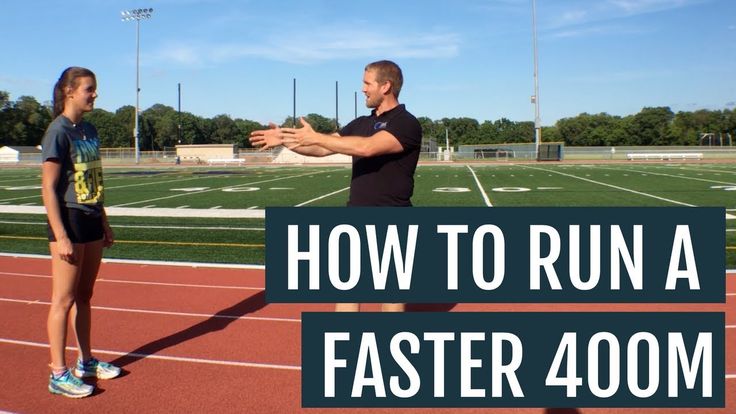 It’s like Goldilocks’ porridge—not too hot, not too cold, just right. Latif Thomas calls it running “at the edge of insanity.” You need to be fast but relaxed.
It’s like Goldilocks’ porridge—not too hot, not too cold, just right. Latif Thomas calls it running “at the edge of insanity.” You need to be fast but relaxed.
This is not real acceleration, nor is it even re-acceleration, but it will feel like it. (Read Five Methods to Maximize Acceleration.) Here, you should start to wind up the speed over the course of the bend. Actually, what happens is that you slow the rate of deceleration; but it will feel like you are accelerating because you will be pushing instead of floating. The trick is to increase speed gradually through the course of the bend. Don’t try to kick at the 200m point, as this will waste considerable energy.
KickThis phase varies depending on the athlete and the race situation. But in general terms, I like my athletes to accelerate off the bend and start their kick at the 100m marker. (See How Texas T&F Improves Their Kick.) This is because if they accelerate at this point, they’ll be pushing as they straighten up off the bend. It feels like this gives you an extra shot of speed, and you get the jump on competitors who straighten up first before kicking. This can be a particularly good time to use the Valsalva technique.
It feels like this gives you an extra shot of speed, and you get the jump on competitors who straighten up first before kicking. This can be a particularly good time to use the Valsalva technique.
This is where things can start to get messy, especially if you didn’t get the other phases right. However, no matter what went down previously, the final phase is hell on earth. Sprinting when your body is racked with lactic pain and screaming at you to stop is difficult to say the least. Each athlete has to find his or her own way through it, but believe it or not, the best way is to run faster. It’s obviously counterintuitive, but continuing the kick changes the reaction of the body for a short time after the first 300m. It also provides a psychological edge, bringing the finish line toward you faster, so the race will be over sooner. But be assured, these mental tricks have no more than marginal effects. It will hurt. There is no way around it.
For more 400m training advice, check out A Faster 400 With Baylor Track.
The 400m is a tough race, so training for it is pretty rigorous. However, many athletes make it harder on themselves because their training lacks an indispensable element.
A race strategy is critical to effective training, and it should shape your overall preparation. Design your training program to provide a basis of consistency from which you can make real improvements.
Below are six phases of the 400m race and a strategy for getting each one right. The phases have been selected because track markings or visual cues are easy to work with, but as you become more experienced, you will be able to vary this either way.
Start to 50mThe start and the drive phase should be executed the same for any sprint: “go ugly early,” to coin a phrase. The reason to drive hard and not hold back at the start is that you are using your alactic energy system, and since it burns out pretty quickly (in roughly seven or eight seconds), you might as well take maximum advantage of it. Holding back will not stop it from burning out. Also, acceleration is technically difficult, especially in sprinting, and if you try to pull back to 95% of your maximum speed, for example, who can judge that? Save your adjustments for the next phase.
Holding back will not stop it from burning out. Also, acceleration is technically difficult, especially in sprinting, and if you try to pull back to 95% of your maximum speed, for example, who can judge that? Save your adjustments for the next phase.
The next 50m constitute the transition phase. You are coming off the bend and getting into your stride, and this is where you set the pace and cadence for the next stage.
FloatYou can’t run a 400m flat out all the way around. Those who try will blow up at around 250m and start going backward. Getting the float phase absolutely right is the most important strategy in the race because it covers the 100m to 200m sections. If you go too slowly, you’ll lose too much time, but if you go too fast, you’ll flame out. It’s like Goldilocks’ porridge—not too hot, not too cold, just right. Latif Thomas calls it running “at the edge of insanity.” You need to be fast but relaxed.
AccelerationThis is not real acceleration, nor is it even re-acceleration, but it will feel like it. (Read Five Methods to Maximize Acceleration.) Here, you should start to wind up the speed over the course of the bend. Actually, what happens is that you slow the rate of deceleration; but it will feel like you are accelerating because you will be pushing instead of floating. The trick is to increase speed gradually through the course of the bend. Don’t try to kick at the 200m point, as this will waste considerable energy.
(Read Five Methods to Maximize Acceleration.) Here, you should start to wind up the speed over the course of the bend. Actually, what happens is that you slow the rate of deceleration; but it will feel like you are accelerating because you will be pushing instead of floating. The trick is to increase speed gradually through the course of the bend. Don’t try to kick at the 200m point, as this will waste considerable energy.
This phase varies depending on the athlete and the race situation. But in general terms, I like my athletes to accelerate off the bend and start their kick at the 100m marker. (See How Texas T&F Improves Their Kick.) This is because if they accelerate at this point, they’ll be pushing as they straighten up off the bend. It feels like this gives you an extra shot of speed, and you get the jump on competitors who straighten up first before kicking. This can be a particularly good time to use the Valsalva technique.
The Final PhaseThis is where things can start to get messy, especially if you didn’t get the other phases right. However, no matter what went down previously, the final phase is hell on earth. Sprinting when your body is racked with lactic pain and screaming at you to stop is difficult to say the least. Each athlete has to find his or her own way through it, but believe it or not, the best way is to run faster. It’s obviously counterintuitive, but continuing the kick changes the reaction of the body for a short time after the first 300m. It also provides a psychological edge, bringing the finish line toward you faster, so the race will be over sooner. But be assured, these mental tricks have no more than marginal effects. It will hurt. There is no way around it.
However, no matter what went down previously, the final phase is hell on earth. Sprinting when your body is racked with lactic pain and screaming at you to stop is difficult to say the least. Each athlete has to find his or her own way through it, but believe it or not, the best way is to run faster. It’s obviously counterintuitive, but continuing the kick changes the reaction of the body for a short time after the first 300m. It also provides a psychological edge, bringing the finish line toward you faster, so the race will be over sooner. But be assured, these mental tricks have no more than marginal effects. It will hurt. There is no way around it.
For more 400m training advice, check out A Faster 400 With Baylor Track.
Alisher Yakupov jogging
© [unknown]
Is it necessary to establish the correct technique from the moment you start running? Or can you do without it for small loads?
Relearning is harder than learning from scratch. For me, not working on technique is the same as giving up any goals in running at all. There are rarely people who do not want to run a little faster, a little longer, less tired.
For me, not working on technique is the same as giving up any goals in running at all. There are rarely people who do not want to run a little faster, a little longer, less tired.
Small loads are a relative issue. A typical incident happened to a colleague the other day. She trained under the gentle MyAsics program, but at the very end of it, at a half marathon, she developed an inflammation of the knee joint. The first thing I asked was if she landed on her heel in front of her. Of course, it turned out that way. It is noteworthy that the knee has never bothered before, and the girl’s physical level is above average - she does a lot of dancing.
It is possible not to work on technique and run at random, but it's like moving through a minefield - sooner or later it will explode. Now a colleague needs to undergo treatment, relieve inflammation. Running prohibited. She promised to take up engineering after rehabilitation. Those who have not yet been injured have a unique opportunity to learn from the mistakes of others.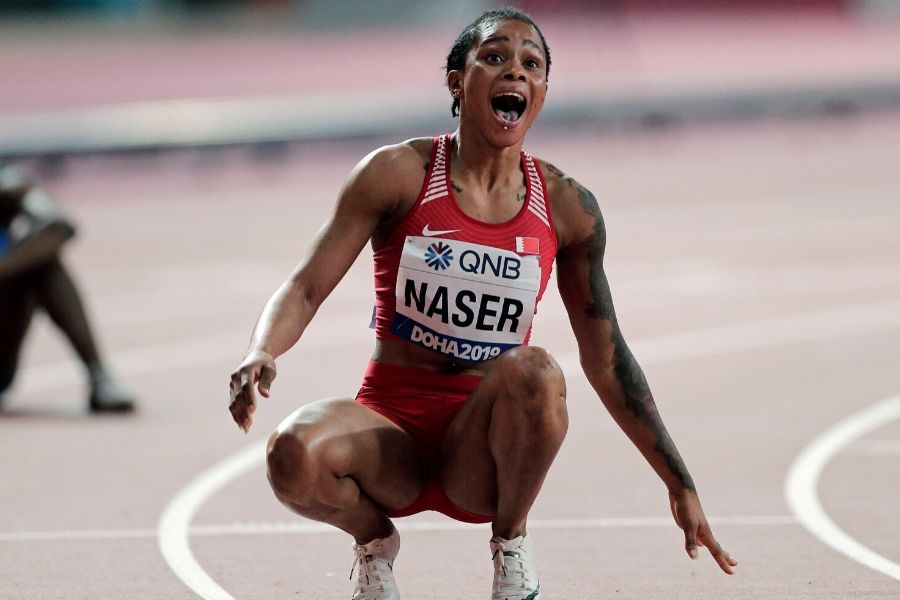
Do you need any special physical conditions to run properly? Leg strength, abs, flexibility?
Nothing unattainable is required. We need a functional minimum. If a person has never played sports, he most likely has weak calves, which will greatly slow down progress in technology. The second problem point is core: lower back, buttocks, abs, hips. If the muscles in these places are weak, the person bends in half or arches the back, sticking out the pelvis. And no technical advice will help him. There are hundreds of complexes to strengthen the core muscles. A good way to check the condition of your stabilizers is the plank exercise.
Another enemy of correct technique is slouching. The reason is problems with the muscles of the chest and back. A person working at a computer almost never uses them. The law works: use it or lose it. Muscles weaken, decrease, shorten and do not allow the shoulders to turn normally. Runners with atrophied pecs are easily recognizable by their rolled forward shoulders and sunken chests. As a result, the center of gravity shifts and the equipment collapses. But the worst thing in this situation is not the technique - the lungs and the heart are cramped in such a squeezed body. Hence the high pulse and heavy breathing. The solution to this problem is surprisingly simple - the usual wide push-ups and pull-ups.
As a result, the center of gravity shifts and the equipment collapses. But the worst thing in this situation is not the technique - the lungs and the heart are cramped in such a squeezed body. Hence the high pulse and heavy breathing. The solution to this problem is surprisingly simple - the usual wide push-ups and pull-ups.
Flexibility is important, but it's better not to talk about flexibility, but about the mobility and stability of the joints. These qualities are determined by the length of the muscles, the elasticity of the ligaments and the functioning of the nervous system. That is, the ability to achieve a certain amplitude of the joint is not only a property, but also a skill, and it can be trained. For running, mobility and stability of the hips, knee joint and foot are important to us. To achieve these goals, yoga exercises, Pilates, and gymnastic stretches are ideal. Flexibility and mobility exercises will expand the amplitude of the work of the hips - the step will become wider, it will be easier to cast and land the leg. The speed and quality of running is guaranteed to improve. Joint mobility exercises can be done in the warm-up, static stretches after the workout.
The speed and quality of running is guaranteed to improve. Joint mobility exercises can be done in the warm-up, static stretches after the workout.
I also like to practice yoga for an hour and a half before bed on hard race days. Then the next morning it is much easier to get up.
Is there a final moment in setting the correct technique? Will it ever be possible to relax or is it a never ending process?
I would like to joke that there is no limit to perfection, but I will not. Everyone decides when enough is enough. It is reasonable to devote enough time to this from the very beginning, and after achieving acceptable results, support it with the help of SBU (special running exercises) once a week - two. Perhaps professional coaches will argue with me, but I believe that you need to start with functional training and technique analysis. We need to prepare ourselves for the increased workload. That is, first sharpen the sword, and then go into battle with it, and not vice versa.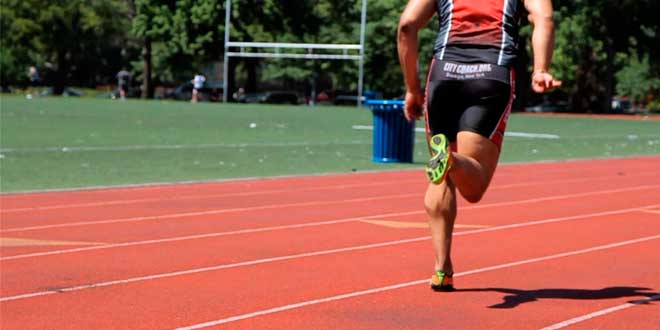 Minor technique and posture corrections plus leg and core strengthening will do more for the amateur than volume gains. The risk of injury will be significantly reduced.
Minor technique and posture corrections plus leg and core strengthening will do more for the amateur than volume gains. The risk of injury will be significantly reduced.
Describe what correct running technique looks like in your mind.
For me, the long distance running technique checklist looks like this:
neck in a neutral position, eyes looking forward
inhale two steps, exhale two steps during tempo run
slightly tense abs to stabilize hips0 degrees
foot lands quietly on the widest part just under the center of gravity of the body without shuffling or unnecessary movements
heel touches the ground last for a split second and immediately lifts off
heel pulls up to the buttock.
no or minimal toe push
touch frequency - 90 times per minute for each leg.
minimum vertical oscillation
maximum relaxation during the lowering phase.
speed is controlled by body tilt, not cadence.
Wings for Life World Run Ambassador Jure Koshir
© Samo Vidić/Red Bull Content Pool
What are the steps involved in mastering this technique?
The first stage is muscle strengthening, work on coordination and stabilization. Squats, jumping on toes, pumping calves on the steps, lunges, twists, boats, tilts, push-ups are ideal here. TRX loops work very well.
The second stage - exercises that work out individual details of the technique. Best Exercises: Hip Raises, Jumps, Deer Step, Heels to Buttocks, Cross Step, Back Run. In my opinion, a good way to train yourself to land on your foot and work out the economy in movements is to do exercises with a rope: single and double jumps, forward and sideways stretches, jumps on one leg and my favorite is running with a rope.
The third stage - small runs in minimalist shoes, working out all the details of the technique at the same time. It is necessary to start such training with short distances, no more than a kilometer, and even less if you are overweight or have problem feet.
It is necessary to start such training with short distances, no more than a kilometer, and even less if you are overweight or have problem feet.
The fourth stage is a gradual increase in volume to the usual one while maintaining control over the technique. No more than 10% per week. After a few months, the muscles of the calves, small muscles of the foot, hips and core will already be sufficiently strengthened, the run will become economical and fast. It doesn't matter how far you can run. What matters is how far you can run correctly.
Is it possible to master the correct technique without the help of a coach? If yes, how?
The first thing to do if the goal is to improve your running technique is to reduce your ambitions and forget about records for a while. The most difficult task without a coach is to learn to objectively assess your progress.
Here is a short action plan:
review your training plan, replace a couple of runs a week with special running and strength exercises.
read technical books, watch videos;
choose a minimalist training shoe with a slight toe-to-heel drop;
film yourself regularly, preferably in slow motion, study changes in technique, check the checklist;
keep a diary, note changes in heart rate, pace and pain.
For an objective assessment of the results, you can purchase a gadget that will provide extended training statistics: cadence (number of touches of the ground per minute), vertical oscillation (body oscillation between the phase of flight and landing), contact time with the surface, pulse, etc. P. I currently have a Garmin Forerunner 620. In my opinion, this is the best option for working on technique without the participation of a trainer.
Indicators must change over time. The optimal cadence is about 170-180 touches per minute, over time it should increase to 180. The optimal oscillation is from 6 to 13 cm, with the improvement of technique this value should decrease.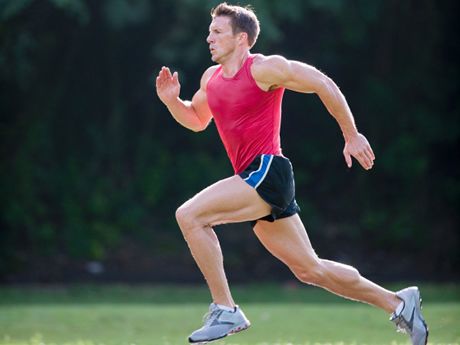 A good ground contact time for an amateur is between 200 and 300 milliseconds, for pros this figure is below 200.
A good ground contact time for an amateur is between 200 and 300 milliseconds, for pros this figure is below 200.
Do you need to learn the correct technique if you are running on a treadmill at home or in a club? It is rubber, shock loads are less.
Good technology is not only about shock reduction, but also about economy. Regardless of the surface, the right running technique will allow you to run longer, further, faster.
What points, especially in terms of errors and their correction, should be paid special attention to?
The most common mistake is focusing on one detail and ignoring the rest. For example, a person read somewhere that you need to land on your toe. He goes out for a run and runs with wide jumps, stretching his leg forward and lowering it far in front of him. As a result, he earns problems with his foot and periosteum, refuses to run for a long time and comes to the conclusion that this technique is not for him. If he had spent time on a book, done special exercises, prepared his muscles, learned to control all the details - everything would be completely different.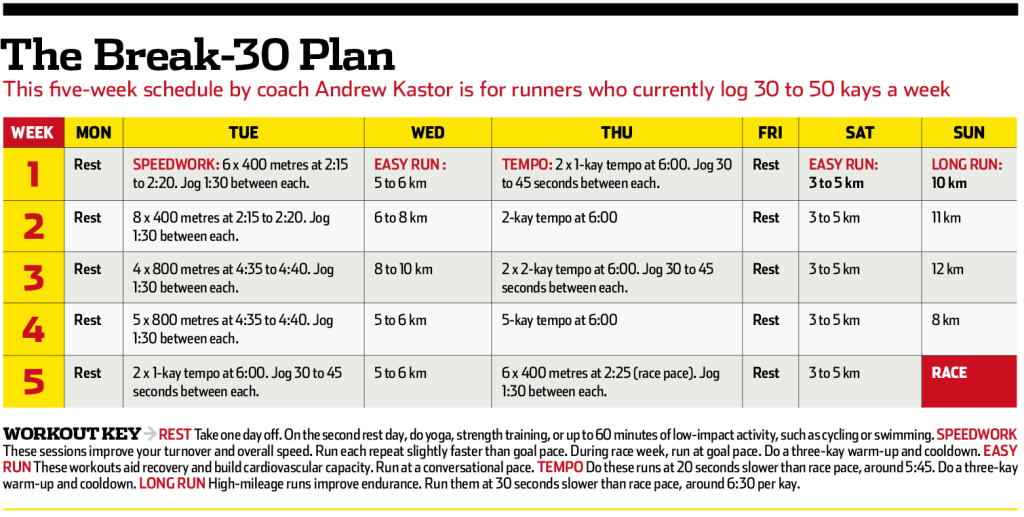
Progress does not come as a result of reading a book or insight, it is a long work on oneself. Sometimes it seems to a person that everything is already clear, he closes the book in the middle and tries to run a long distance with the new “correct” technique. Even if he does everything correctly, changing the technique will shift the load on the muscles that do not expect it at all. As a result, again pain and frustrating
Now the most important thing to remember that our bodies are very different we don't run to run properly we learn to run properly so we can enjoy our hobby more and reduce the risk of injury so I'm not asking you to change in control freaks and the rest of your life to calculate your cadence, and every morning repeat the memorized checklist of good running technique.It's like learning to drive a car.Over time, knowledge will turn into reflexes, and you will not need to constantly control and check yourself, but only get a running gear "check-up" occasionally.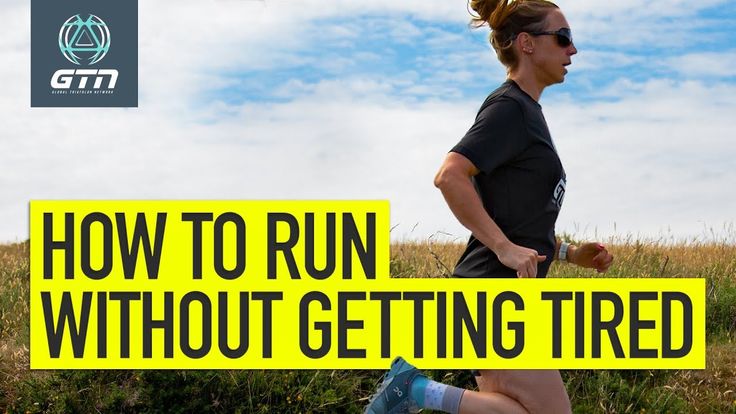 Gadgets, numbers, and exercises will fade into the background, and your skill will become part of you. That's when the real running begins - full of ease, speed and pleasure.
Gadgets, numbers, and exercises will fade into the background, and your skill will become part of you. That's when the real running begins - full of ease, speed and pleasure.
Running 400 meters - sprint distance in track and field athletics. For such a long sprint, the athlete must have an excellent combination of power, speed and endurance, which is why this distance is held in high esteem among sprinters.
In this new article in the running series, we cover the 400m from A to Z.
It is now unified throughout the world the distance of 400 m, but it was not always so. Previously, in many countries, in particular in the USA, athletes covered a distance of 402.336 m, which is equal to 440 yards or a quarter of a mile, while the traditional 400 m is 437.445 yards.
The Olympic history of the 400m dates back to 1896. It was then that this discipline appeared in the men's program of the Games. Women, on the other hand, could not compete at such a distance until 1964.
It was then that this discipline appeared in the men's program of the Games. Women, on the other hand, could not compete at such a distance until 1964.
If you look at the list of the best male 400m sprinters in the history of running, it becomes clear without counting that the American school of running dominates here. But in the women's ranking, everything is not so simple: the representatives of Russia, the USA, the GDR and the FRG (in the past) share the glory among themselves.
The men's Olympic record has been 43.03 seconds since 2016 and the women's 48.25 since 1996. But in the first Olympics for four hundred meters, the results were much slower, especially for men. In 1896, American Thomas Burke won gold with a finish time of 54.2 s.
After 4 years, men are faster: US runner Maxi Long sets a new Olympic record in the first race - 50.4 s. And already in the final, he improved his own record by a whole second, running in 49.4 s.
The first women's 400m Olympics in 1964 was faster than the first men's in 1896. Betty Cuthbert, an Australian sprinter, won gold by running the final in 52 seconds against the then world record of 51.9 seconds (1962).
Betty Cuthbert, an Australian sprinter, won gold by running the final in 52 seconds against the then world record of 51.9 seconds (1962).
For the first time, women will overcome the 50-second milestone at the Games at 1976 year. The author of a new world record and the first Olympic was the Polish athlete Irena Szewinska - 49.28 s (two years earlier, she also set the first world record of 50 s - 49.9).
Read also: Types and disciplines of athletics
Outdoor stadium
Room
Other Track and Field Norms
During the summer season, the 400m is held in a stadium of exactly the same length, so athletes need to run one lap . In winter, two laps are usually run in a 200 m arena.
In winter, two laps are usually run in a 200 m arena.
At the stadium, each athlete moves and finishes on his lane, but indoors after the first lap, all participants move to the same lane, so it is very important to win the first 200 m, which is why the first half of the distance is most often 1-2 seconds faster second.
The 400m uses the starting blocks needed for a powerful start at the start of a race. When the race is about to start, the runner must stand in their starting blocks and wait for the gun to fire, and then start running.
False start, i.e. starting before the pistol fires, means disqualification.
With a large number of participants, the competition is held in several circles and includes preliminary heats, quarter-finals, semi-finals and, in fact, the finals.
This means that athletes must be ready to run several times 400 m in one day without wasting all their energy until the final race.
Van Niekerk sets the world record in the 400m at the Rio 2016 Olympics
An important point: even if before the final one of the participants showed a time better than what will become victorious in the final, the winner is still determined by the results of the final, regardless of past results.
How to run this long sprint race? Start slowly or from the very beginning develop maximum speed? Here we will tell you about the stages of the perfect 400-meter race.
Although this is an endurance sprint, a quick start is essential. If a 400m runner starts too slowly, he will not be able to use the 6-7 second window that does not produce lactic acid and hydrogen ions.
This is about the first 50 meters after leaving the starting blocks. In those few seconds, the runner is moving at full speed with the head down and the body bent, which helps to achieve maximum speed.
For the next 50m, the runner is upright and moving up to his racing pace. You need to run smoothly, relaxing the upper shoulder girdle.
Keep the rhythm for the next 100m, reaching half the distance. If in class you practiced running along a turn, you should not experience a loss of speed when passing it.
The 200m mark in a 400m competition must be reached about 1-2 seconds slower than their 200m best. For example, if a 400m runner is able to run the 200m in 21.5 200 m in a 400 m run in 22.5–23.5 seconds.
Run fast but relaxed. In other words, roll on.
It is believed that the third 100 m is decisive in the race. In this phase of the race, you reach the second turn, where you begin to pick up speed and turn on the active work of the hands.
Go all out with just over 150 meters to go. However, during this final push, there will be no visible increase in pace.
If there is a significant increase in speed, this indicates that the athlete ran the first 250 m too slowly and saved his energy in the last 100-150 m. . And the best way to get rid of it is to just run faster. Relax your shoulders and jaws, there is no point in wasting energy on tension.
. And the best way to get rid of it is to just run faster. Relax your shoulders and jaws, there is no point in wasting energy on tension.
Inexperienced athletes often slow down the last 2-5m before the finish line, which wastes valuable time and can make a big difference, because sprinting is all about subsecond precision.
Women's 400m sprint at the Doha 2019 World Championships
Sprinters run in spikes - special hard shoes with spikes on the sole. But, as usual, there should be different shoes for different disciplines. Since 400m is a long sprint, spikes are not the same as for 100m runners.
They have a thicker heel and a less rigid sole. In the 400-meter sprint, athletes run two turns, which also affects the structure of their shoes: they need more serious grip.
In the 400-meter sprint, athletes run two turns, which also affects the structure of their shoes: they need more serious grip.
Here are some of the models that have proven to be the best:
Run shorter races like 100m and 200m as training. They will allow you to work even faster. Don't ignore the 600m and 800m starts, which will develop your endurance.
Longer distances are less useful because they focus on aerobic endurance, while 400m is completely anaerobic work. To be successful in the 400m, training must be built around sprinting and developing speed endurance.
It is important to visit the gym and perform jumping exercises to improve strength skills.

 For example: 6x60 m from the start and on the move.
For example: 6x60 m from the start and on the move. 1.5-2 weeks before the decisive race, exclude strength and jump work from the plan. The rest of the time just run and keep your muscles toned with a couple of fast 100-200m runs.
Can you predict the outcome? Yes, the formula for calculating potential results in the 400m run is as follows: take the best result for 200m, multiply by two, and add another 3.5 seconds to the result.
The 400m is considered a subspecialty among runners. Often sprinters combine 100 and 200 m, intermediates - 800 and 1500 m, but those who chose 400 m usually run only this distance. This is because sprinting qualities, the ability to distribute forces, and speed endurance must work for success.